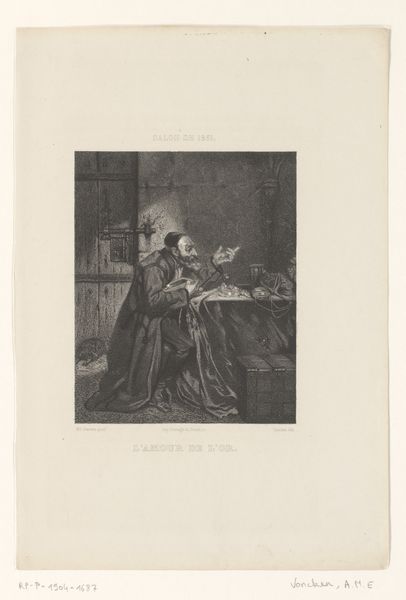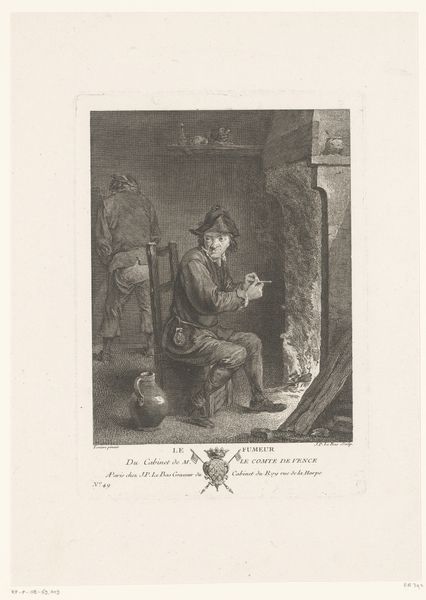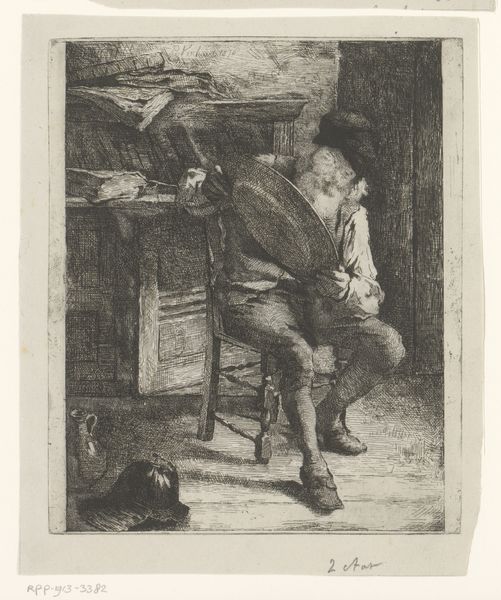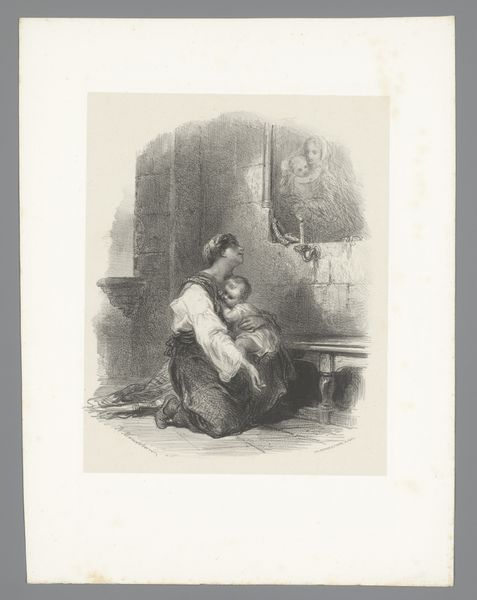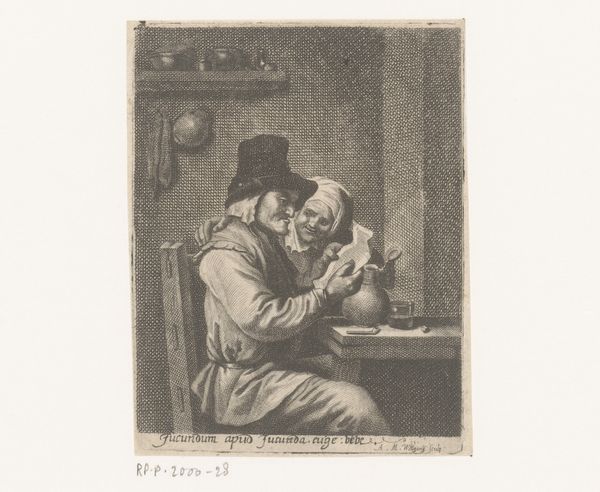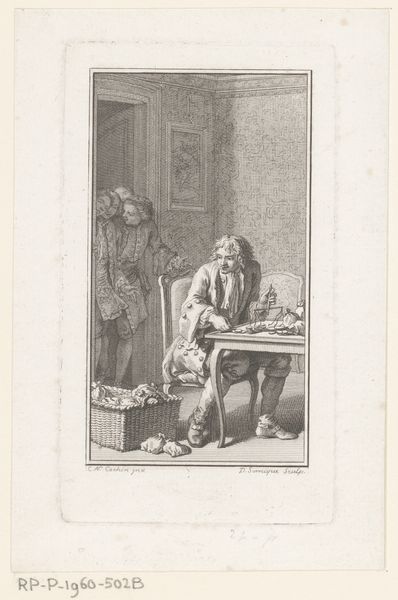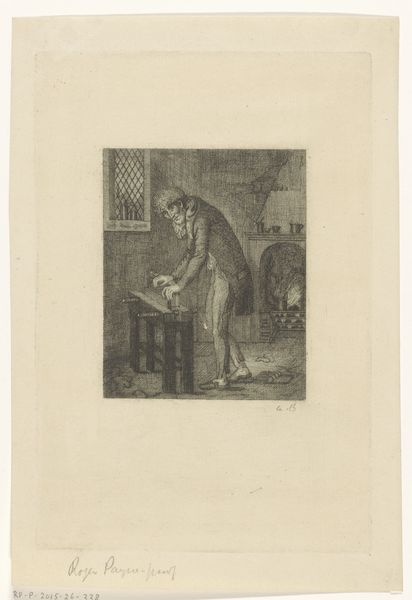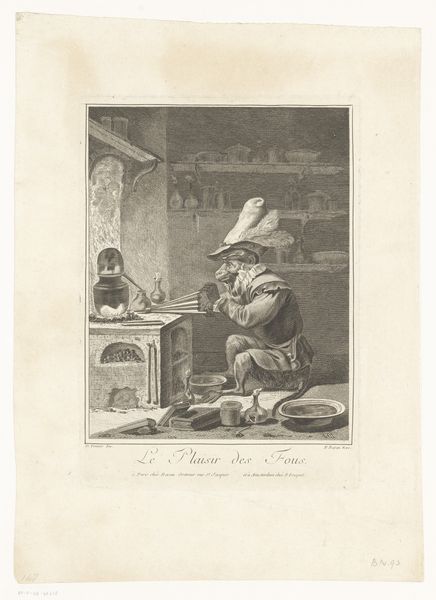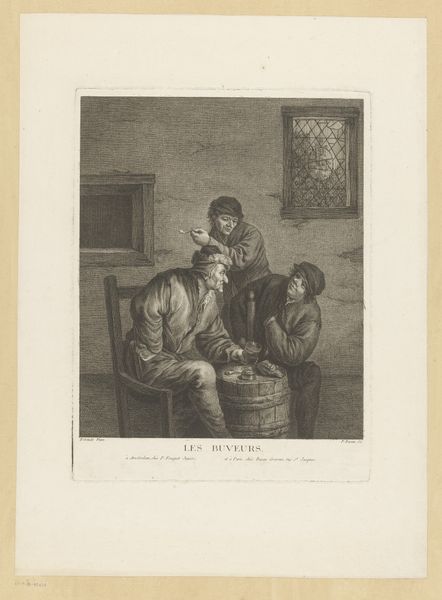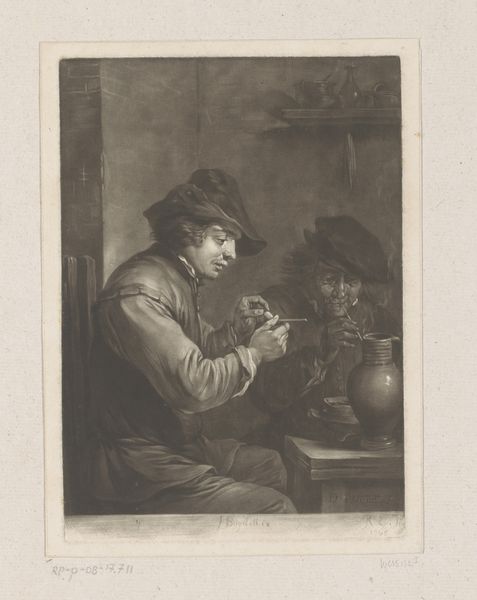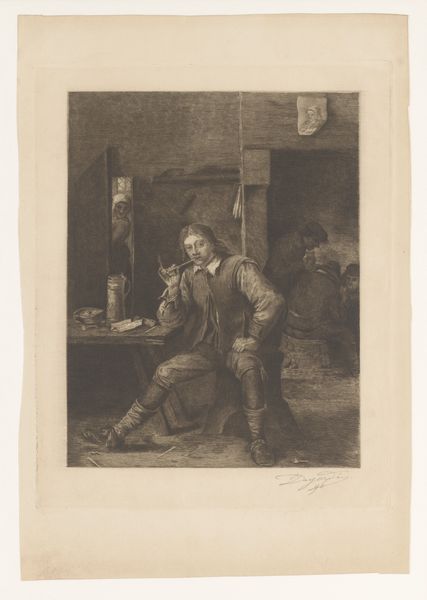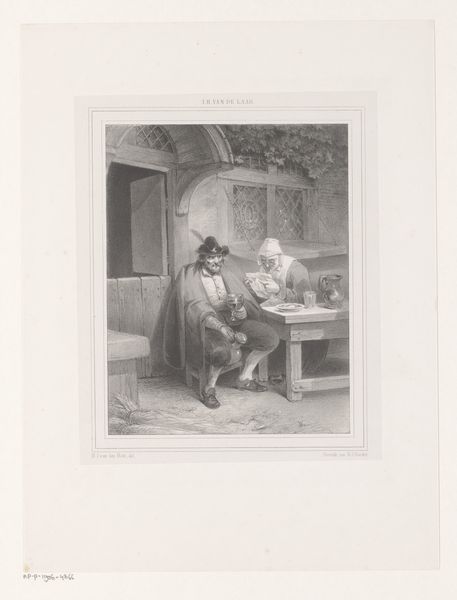
drawing, print, engraving
#
portrait
#
drawing
# print
#
line
#
genre-painting
#
engraving
#
realism
Dimensions: height 449 mm, width 315 mm
Copyright: Rijks Museum: Open Domain
Editor: This is Adolphe Mouilleron's "Bretonse man op klompen steekt zijn pijp aan", placing it around 1851 to 1862. It’s an engraving, residing in the Rijksmuseum. The level of detail achieved through line work is quite amazing! What can you tell us about the historical and cultural context of this piece? Curator: Indeed! Mouilleron presents a slice of life here. The act of a Breton man lighting his pipe, rendered with such focus, elevates a mundane activity. How do you think this image functioned in the context of 19th-century France? Editor: Possibly to showcase rural life? To document a disappearing culture through an idealised gaze? Curator: Precisely. We see the rise of Realism occurring simultaneously with intense political and social upheaval. Images like these often participated in constructing ideas about national identity and the ‘authenticity’ of regional cultures, almost a nostalgic record. Consider the very act of collecting and displaying this work in a museum, what does that signify? Editor: That's interesting, so by displaying an image of the common man it gives value to him? Would this be seen as an act of elevating social class? Curator: It's complex, more of a containment of cultural identity, especially during a time of modernization and shifts in social structures. The museum validates Breton culture, but perhaps at a cost of reinforcing certain stereotypes, even if unintentionally. Are we truly representing or are we constructing? Editor: Wow, I never considered the idea that we might be constructing ideas about others in the museum setting. I'll certainly look at similar works with new eyes now. Curator: Museums play such a large role in creating our social landscape; critical dialogues such as this push us to understand art's place in our ever-shifting cultures.
Comments
No comments
Be the first to comment and join the conversation on the ultimate creative platform.

